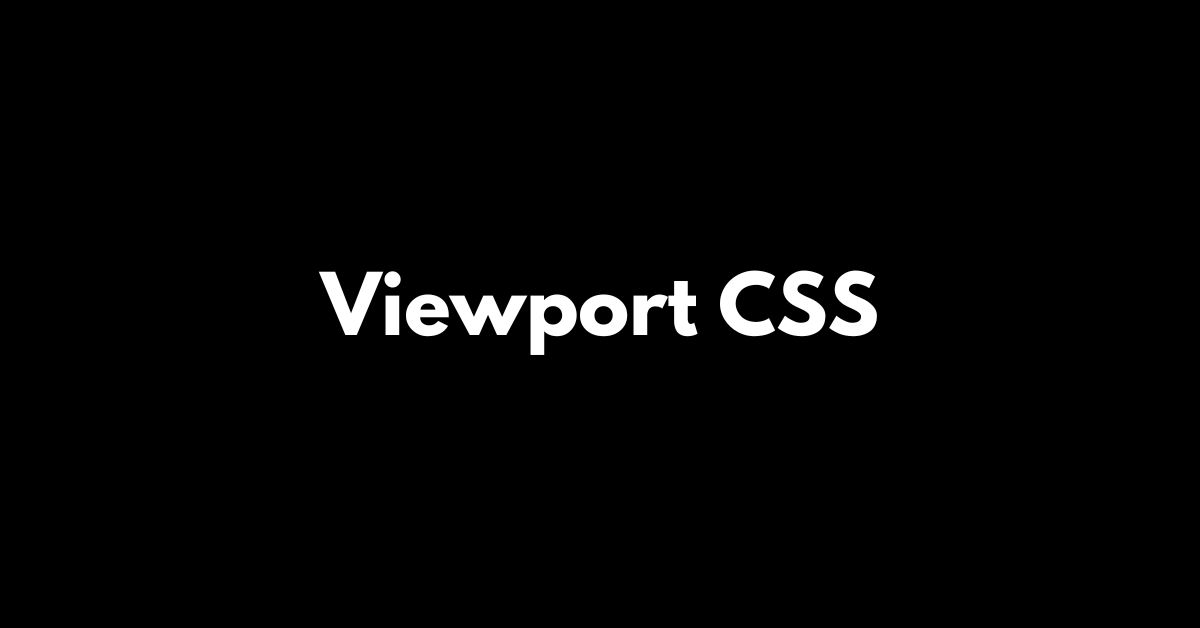Introduction
It is important to build websites that effortlessly adjust to different devices in the field of web development. Using "viewport CSS" is one important step in accomplishing this. Viewport CSS will be extensively covered in this post, along with its importance and useful implementation examples.
Imagine you're doodling a picture and you want to make sure it fits inside the borders of your paper. In the same way, viewport CSS is like that piece of paper, giving you a neat boundary to position your website elements like images or texts. It even helps adjust to screens of different sizes, like phones and computer screens, without spilling out the elements.
It's like making a puzzle piece that fits just fine, no matter how big or small the puzzle is. We avoid mistakes like forgetting to set the initial size, which is like remembering to make our drawing or puzzle piece just the right size. And with possible future trends like 3D interactions, web designing with viewport CSS is like drawing the coolest, most flexible picture ever!
Understanding the Viewport in CSS
The viewport refers to the visible area of a webpage within a browser window. It is the canvas on which web content is displayed. As devices with diverse screen sizes gained prominence, the concept of the viewport became essential to ensure optimal user experience.
The Importance of Responsive Design
Responsive design, the practice of designing websites to adapt to different screen sizes, is vital. Users access websites on smartphones, tablets, and desktops, and they expect consistent usability and aesthetics. Responsive design enhances user satisfaction and engagement.
Imagine viewport CSS as a magical telescope that controls what users see on their screens, much like how a pirate views ships with his spyglass. It helps make the website look just as good on your phone as it does on a computer. This telescope helps web designers like us build friendly websites for everyone.
But we must learn to use our telescope correctly! We carefully set the focus (initial scale setting) to make sure everything looks right. We also use the powerful magic of media queries to make sure our website can transform and look perfect on any screen. Making websites is a fun and exciting adventure with viewport CSS!
Using the “viewport” Meta Tag
To control how a webpage appears on different devices, the “viewport” meta tag is used. This tag enables developers to set properties like initial scale and width. For instance:
<meta name="viewport" content="width=device-width, initial-scale=1.0">This code ensures that the webpage’s width matches the device’s width, and the initial scale is set to 1.0.
Controlling Viewport Properties with CSS
CSS plays a significant role in fine-tuning viewport properties. Developers can use CSS rules to size and position elements within the viewport. For example:
@media (max-width: 600px) {
.container {
width: 100%;
padding: 10px;
}
}This CSS rule adjusts the container’s width and padding when the screen width is 600px or less.
Media Queries for Viewport Adaptation
Media queries allow developers to apply styles based on screen characteristics. For instance:
@media (min-width: 768px) {
.sidebar {
display: block;
}
}In this example, the sidebar becomes visible when the screen width is at least 768px.
Common Mistakes to Avoid
Avoiding common pitfalls is crucial. Neglecting the initial scale setting can lead to improper rendering. Relying solely on fixed units may cause overflow or small content. Always consider relative units and thorough testing.
Best Practices for Viewport CSS
Adopting best practices ensures optimal results. Use relative units (e.g., percentages) for sizing. Favor flexible layouts. Regularly test across devices to ensure consistency.
Viewport Units for Sizing
Viewport units offer dynamic sizing. For instance, using vw (viewport width) for font size:
h1 {
font-size: 5vw;
}This ensures the header’s font size is 5% of the viewport width.
Cross-Browser Compatibility
Test viewport CSS across various browsers. While modern browsers handle it well, testing ensures consistency. Prefixes like -webkit- may be needed for certain properties.
Future Trends in Viewport CSS
The future holds exciting possibilities. Trends may include 3D viewport interactions, enhanced device detection, and more precise control over viewport properties.
Conclusion
Viewport CSS is indispensable for crafting responsive web designs. Understanding viewports, utilizing meta tags, applying CSS rules, and embracing best practices are key. By implementing these strategies, you’ll create websites that provide an exceptional user experience across devices.
FAQs
Q1: How do I set the initial scale for the viewport?
To set the initial scale, use the “viewport” meta tag and specify properties like initial scale. For example, <meta name="viewport" content="width=device-width, initial-scale=1.0">.
Q2: Can viewport units be used for font sizing?
Absolutely! Use viewport units like vw for font sizing. For instance, h1 { font-size: 5vw; }.




